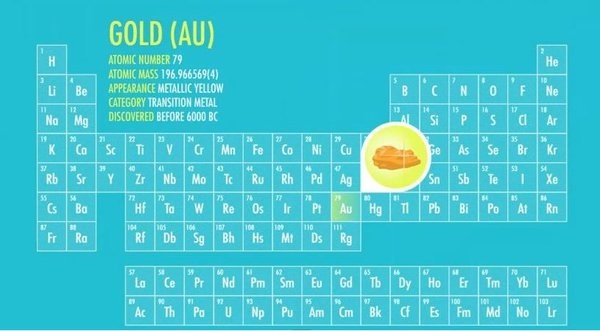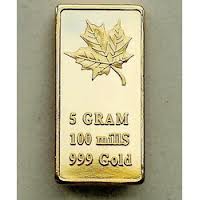All that glitters is gold–or is it? While most folks know that 18 kt is more valuable than gold plate, I thought I’d review the terms during this shopping season to help you get the best value for your money.
Pure gold is element #79 of the periodic table (abbreviation “Au” comes from ancient Greek–remember high school chemistry???). By definition, an element cannot be broken down into smaller components. In the middle ages, the “science” of alchemy attempted to transmute lesser elements into gold. This is impossible to do, but the attempts kept wizards occupied for centuries.

Why is gold so valuable? Besides its beautiful color, it is non-reactive, meaning that it does not oxidize (tarnish) easily & it is malleable (soft enough to be worked into thin sheets & complicated shapes). Its longevity & electrical conductivity makes it useful in the electronics industry, but its high cost has led most manufactures in this industry to switch to other materials. There are separate FTC standards for gold used in engineering & military applications, but I am only going to address the standards relevant to jewelry.
Pure gold (assayed to be at least 99.9% pure) is termed “24 kt”. Its natural color is buttery yellow, but it is soft & not durable or strong enough for most jewelry applications. Other alloys contain a fraction of gold plus other metals that improve its strength & other characteristics, including color. Common alloys include varying amounts of nickel, silver, copper & palladium, but the rules only dictate the amount of pure gold, not the other alloys. 18 kt gold is 18/24=75% pure gold; 14 kt gold is 14/24=58.3% pure gold. The other percentages can be whatever metal the metallurgist decides to add to achieve a particular goal. Rose gold contains more copper to give it the pinkish color & white gold has nickel or palladium to make it silvery white. Fine jewelry is usually set in 14 kt or higher gold, although in Europe you will mostly find 18 kt & some 10 kt.
Gold-filled is a great economical alternative to karat gold. It is made by heat & pressure bonding a thick layer of karat gold (usually 14 kt) to a core of brass. The Federal Trade Commission requires that it be hallmarked to indicate how much of the item’s weight is the karat gold. Most gold-filled has 1/20 or 5% karat gold over the brass & is marked “14/20” meaning the weight of the 14 kt gold is 1/20 or 5% of the total weight. Gold-filled items have an effective layer of gold that is 50-100,000 times thicker than gold plated (see below) & the gold layer will usually last 5-30 years before wearing off, even with daily use. Lesser gold-filled items may be 1/40 or even 1/60 karat gold by weight. The FTC allows the term “Rolled Gold Plate” or “RGP” to denote 12/60 (12 kt gold filled that is only 1.6% 12 kt gold by weight). 14/20 gold-filled is slightly more expensive than sterling silver, but much cheaper that 14 kt gold. I have used 14/20 gold-filled wire and chain in my Sundrops Necklace that sells for $1395. If I had used 14 kt, the price would have been over $4000.
The alternative to karat gold & gold-filled is gold plating . The US Federal Trade commission has instituted rules governing the thickness of gold that must be applied to be labelled “gold plated”. There is no rule about the metal beneath the gold plating, except for vermeil, which must be sterling silver. I have never understood the appeal of vermeil–if the gold wears off, the sterling will show through & is subject to black tarnish. I think it is better to use brass as the base metal, as it is more the color of gold & worn areas will be less obvious. However, some people feel that the sterling makes the piece more valuable.
Because of these stricter requirements, you don’t see items marked “gold plated” much anymore. Items that have a thinner gold electroplate coating than those listed below are termed “gold finish”. Some manufacturers will describe pieces as “18 kt (or even 23 kt) gold over sterling”. This terminology does not guarantee the thickness of the gold layer, so it could be very thin.
According to FTC standards the various required minimum thicknesses of 14 kt (or higher) gold layers are:
“gold electroplate” = 0.175 microns
“gold plate” = 0.500 microns
“heavy gold plate” = 2.500 microns
“vermeil” = 2.500 microns over sterling silver (gold layer must be at least 10 kt)
For comparison consider that a human hair is 100 microns in diameter, a typical coat of varnish is 10 microns & a dollar bill is 200 microns thick. From this chart we can see that “gold plate” is 20 times thinner than an average single coat of varnish or 200 times thinner than a human hair, so it is not surprising that gold plating is not very durable & will wear off quickly with daily use.
My advice is to buy karat gold whenever possible & gold-filled when cost is a concern. Gold plated items are not likely to be satisfactory unless worn infrequently. To care for gold of all sorts, just wipe with a soft cloth or clean with an ultrasonic cleaner to remove dirt & gunk. Avoid chemical or abrasive cleaners that might accelerate the removal of the gold in plated or filled pieces. Gold does not tarnish, so there is no need for strong cleaners. If you gold plated pieces look dull, it is probably the base metal showing through. Some jewelers can re-plate your pieces to restore the original appearance.


